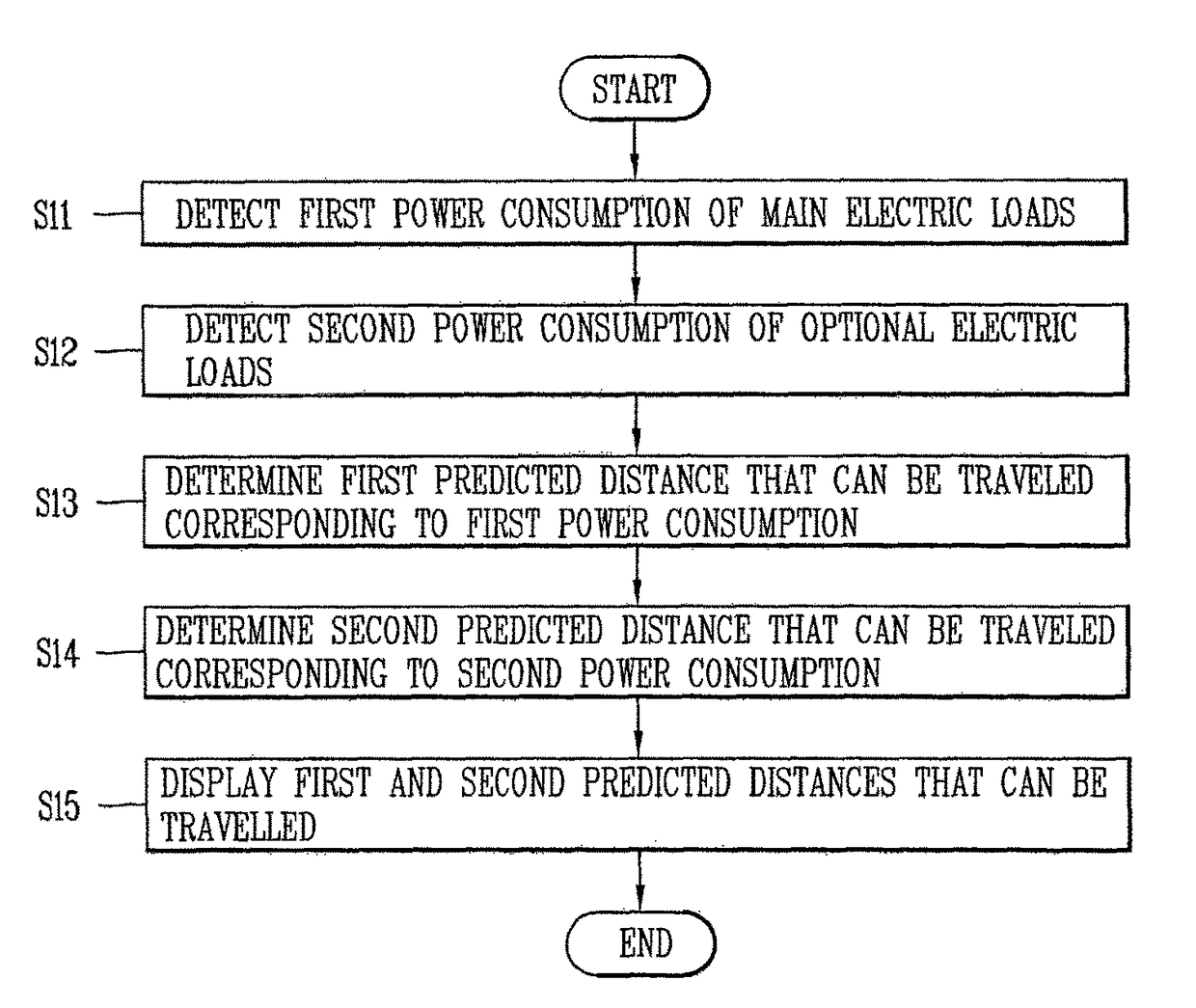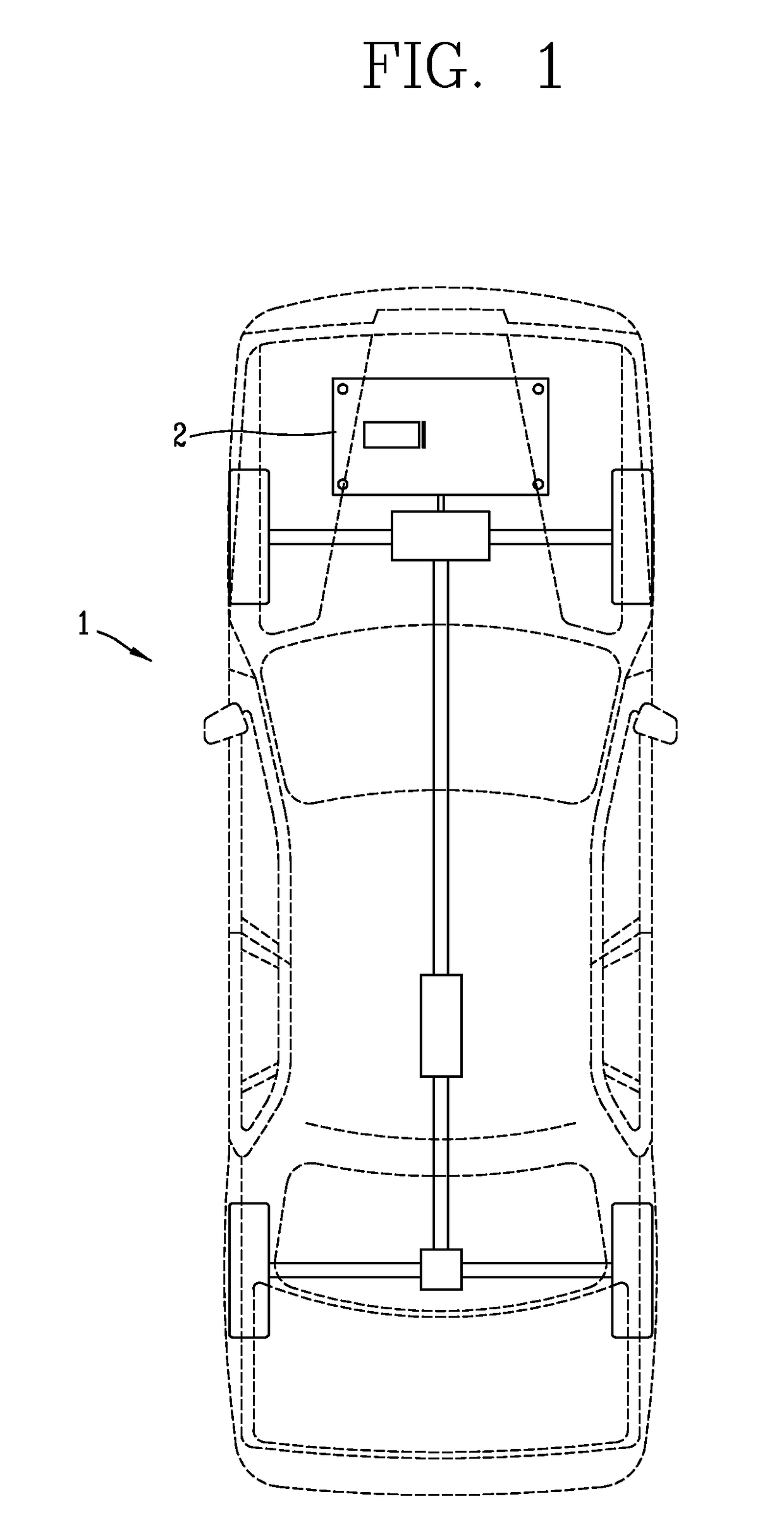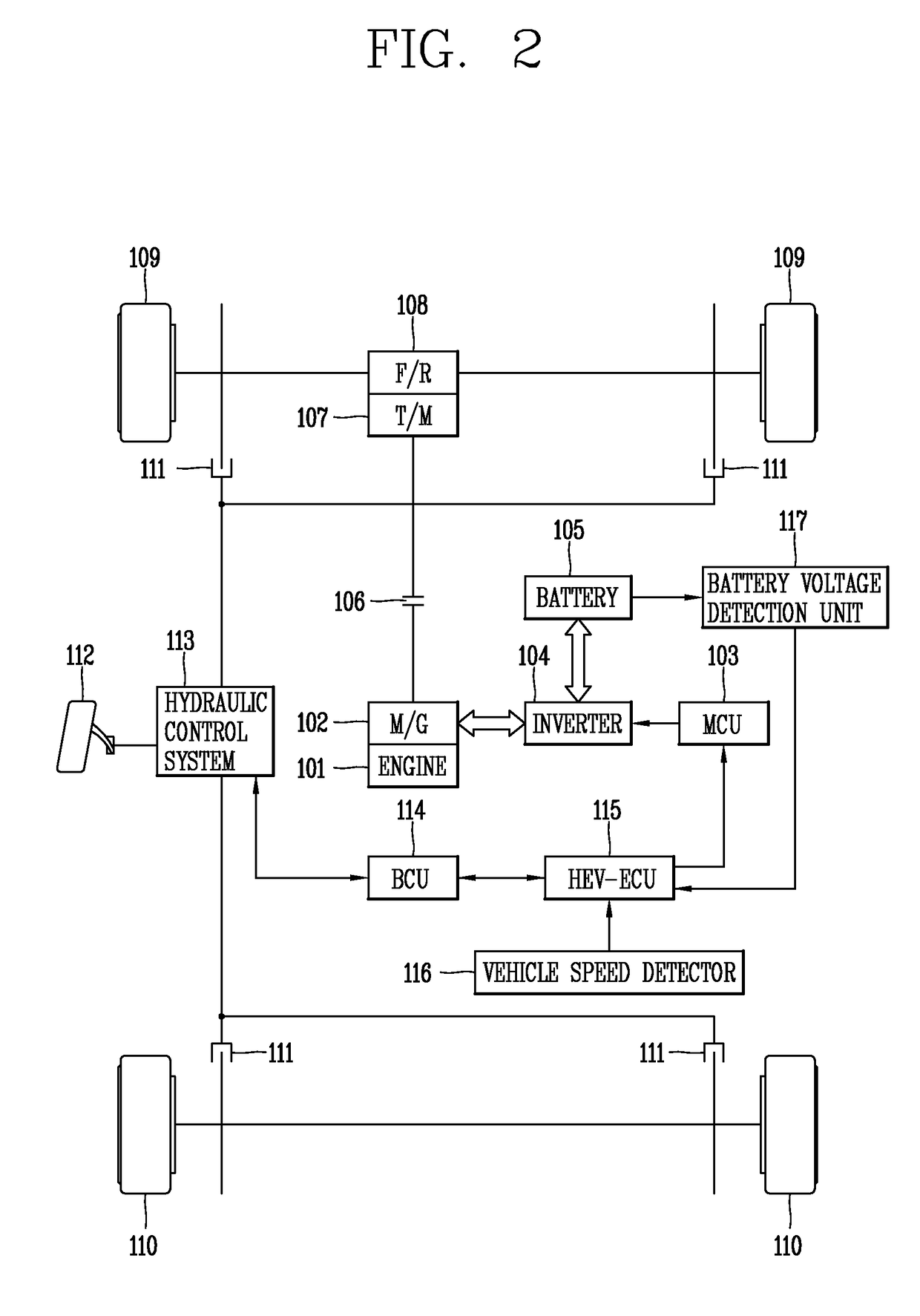Device and method for controlling electric vehicle
a technology for electric vehicles and electric vehicles, applied in distance measurement, navigation instruments, instruments, etc., can solve the problems of not providing the driver with information about how far, and conventional electric vehicles provide only information about distances travelled, so as to increase the predicted distance, control the optional electric load easily and quickly, and increase the predicted distance
- Summary
- Abstract
- Description
- Claims
- Application Information
AI Technical Summary
Benefits of technology
Problems solved by technology
Method used
Image
Examples
first embodiment
[0068]Hereinafter, a device for controlling an electric vehicle according to the present invention that enables a user to easily control a predicted distance that can be travelled by displaying the predicted distance that can be travelled in response to the power consumption of electric loads on the electric vehicle will be described with reference to FIGS. 1 to 8. The control device according to embodiments of the present invention may be configured as a stand-alone device or applied to the telematics terminal 200 of FIG. 3.
[0069]FIG. 4 is a view showing the configuration of a device for controlling an electric vehicle according to a first embodiment of the present invention.
[0070]As shown in FIG. 4, the device 400 for controlling the electric vehicle includes: a power consumption detector 404 that detects a first power (or current) consumption of main electric loads associated with the operation of the electric vehicle and a second power consumption of optional electric loads on t...
second embodiment
[0087]Hereinafter, a device for controlling an electric vehicle according to the present invention that enables a user to easily control a predicted distance that can be travelled by displaying the predicted distance that can be travelled in response to the power consumption of electric loads on the electric vehicle will be described with reference to FIGS. 4 to 10.
[0088]FIG. 7 is a flowchart showing a method for controlling an electric vehicle according to a second embodiment of the present invention.
[0089]First of all, when the electric vehicle is started or the electric vehicle travels, the power consumption detector 404 detects, in real time, a first power (or current) consumption of main electric loads associated with the operation of the electric vehicle and a second power consumption of optional electric loads on the electric vehicle, and outputs the detected first and second power consumption to the control unit 401 (S21 and S22). For example, when the electric vehicle is st...
third embodiment
[0107]FIG. 11 is a flowchart showing a method for controlling an electric vehicle according to the present invention.
[0108]First of all, when the electric vehicle is started or the electric vehicle travels, the power consumption detector 404 detects, in real time, a first power (or current) consumption of main electric loads associated with the operation of the electric vehicle and a second power consumption of optional electric loads on the electric vehicle, and outputs the detected first and second power consumption to the control unit 401.
[0109]The control unit 401 can calculate the total distance that can be travelled by adding the first power consumption and the second power consumption, dividing the remaining battery capacity by the resultant value, and multiplying the resultant value by the battery's efficiency (fuel ratio) (e.g., 10 km per kilowatt-hour) of the electric vehicle.
[0110]The control unit 401 determines a first predicted distance that can be travelled (first pred...
PUM
 Login to View More
Login to View More Abstract
Description
Claims
Application Information
 Login to View More
Login to View More - R&D
- Intellectual Property
- Life Sciences
- Materials
- Tech Scout
- Unparalleled Data Quality
- Higher Quality Content
- 60% Fewer Hallucinations
Browse by: Latest US Patents, China's latest patents, Technical Efficacy Thesaurus, Application Domain, Technology Topic, Popular Technical Reports.
© 2025 PatSnap. All rights reserved.Legal|Privacy policy|Modern Slavery Act Transparency Statement|Sitemap|About US| Contact US: help@patsnap.com



